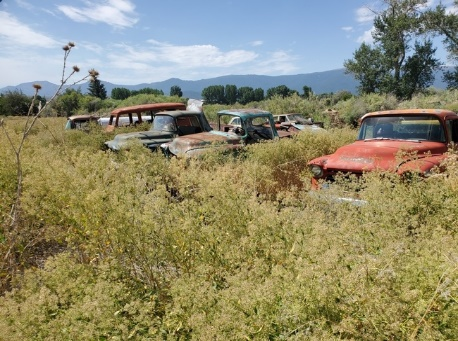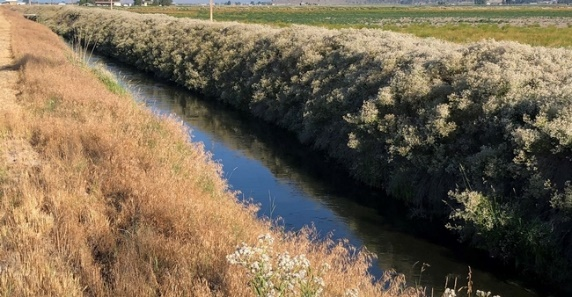Perennial pepperweed (Lepidium latifolium) also known as tall whitetop is a root-creeping perennial weed. It is commonly found along roadsides, ditches, and drains. It is also a big problem in pastures, non-cropland, and even cropland that is not tilled on a yearly basis. Unlike many other weeds of the state, pepperweed is problematic throughout many ecotypes, from low elevation wetlands around the delta up to high elevations in the Sierra's. Perennial pepperweed spreads by seed and root fragments and is very persistent and difficult to control once established.

The key to managing perennial pepperweed is suppressing its extensive underground root system. The plant mainly spreads by roots and can resprout from root fragments buried deep in the soil. Hand-pulling is effective for single plants and seedlings, but hand-pulling will quickly become overwhelming in patches with hundreds of stems. Cultivation/tillage can be effective at suppressing plants and preventing new plants from becoming established, but it also a great way to spread root fragments. Tillage is NOT effective at killing well-established plants and large infestations as the broken root fragments quickly re-sprout.
Herbicides are an effective tool for managing perennial pepperweed, but herbicide choice, herbicide rate, and application timing are extremely important to obtain good control. Herbicides are most effective applied at the flowerbud to flowering stage. 2,4-D, chlorsulfuron (Telar), imazapyr, and glyphosate are effective herbicide active ingredients for perennial pepperweed (sold under several trade names). It is important to follow label directions and recommended rates for perennial pepperweed as higher rates are necessary to control this deep-rooted plant compared to annual weeds such as pigweed and lambsquarter. Keep in mind a single herbicide application rarely eradicates a patch. Yearly re-treatment for multiple years is often necessary for eradication. Another important consideration when using herbicides is to preserve desirable vegetation such as perennial grasses after controlling perennial pepperweed. Perennial pepperweed tends to choke out desirable grasses over time, thus bare ground and exposed soil is common after successful control of this weed. In these cases, desirable vegetation needs to be re-seeded or re-established to prevent perennial pepperweed or other weeds from invading the areas with bare ground.

Everyone is busy with work and on-farm activities but taking a day or two out of your schedule to treat noxious weeds is time well spent. Large monocultures are difficult to control and often spread exponentially along ditches and field borders. Now is a good time to identify patches for herbicide treatment next year as many of the plants are past flowering and starting to dry down. For those interested in treating this year, herbicide treatment is usually effective at flowering and post flower if the lower leaves and stems are still green. Herbicides are also effective in late summer and fall when applied to green re-sprouts after mowing.